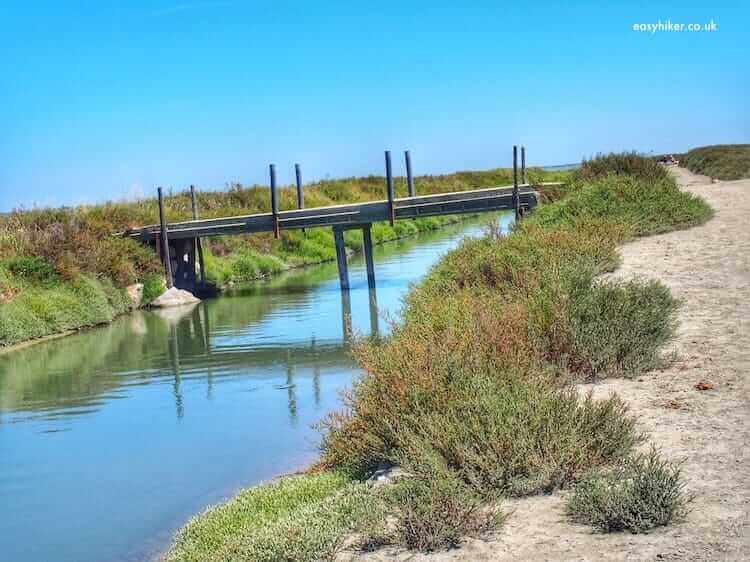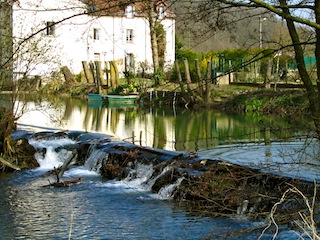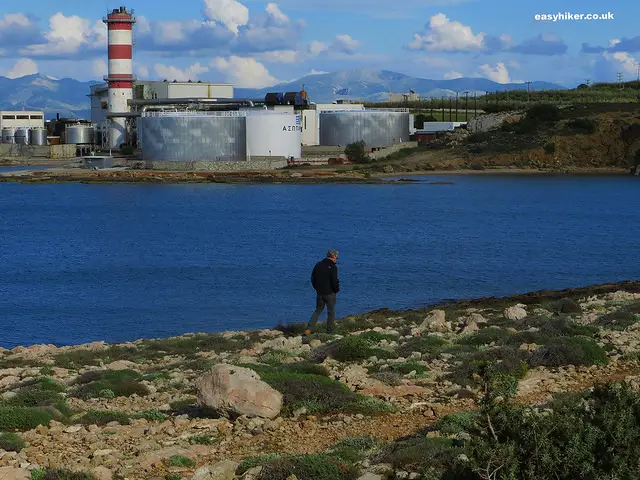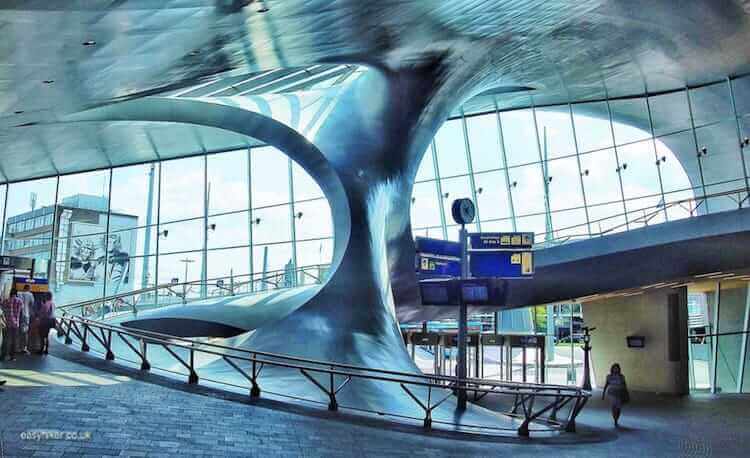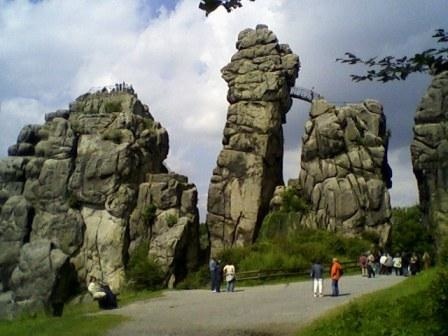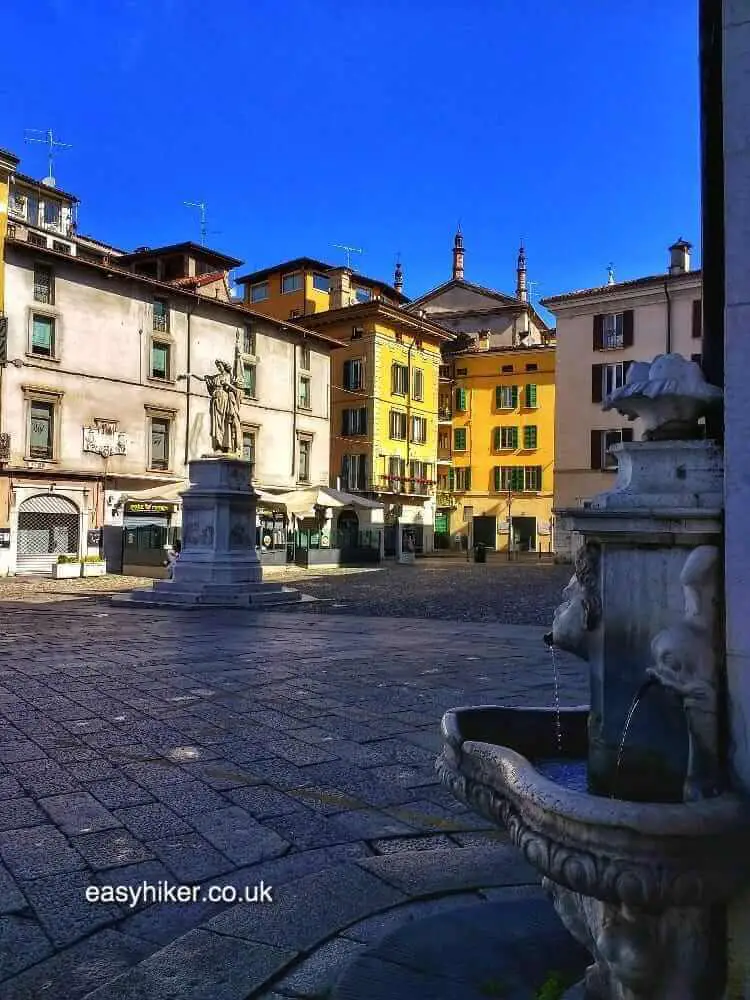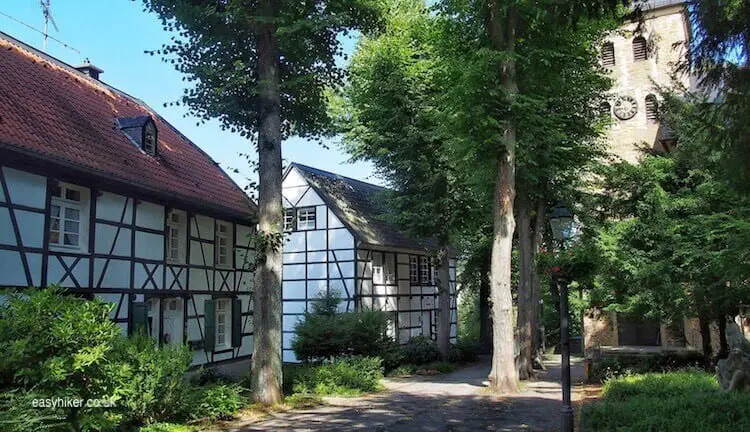When I was a boy, my home town’s local TV station carried a French adventure series that was set in the wild marshlands of the Camargue.
There were a lot of wild horses, water buffaloes and cool guys riding white steeds bareback through the spray, but other than that, I have no recollection of what the series was all about.
What were those guys doing dashing across the Camargue in the first place? Solving crimes? Committing them?
I have no idea and only remember the restlessness they planted in my soul, the painful longing for a world out there that was vastly more colourful and exciting than my drab little home town.
That was how I fell in love with the Camargue.

Now, decades later, armed against disappointment with the wisdom of middle age, I know of course that the real thing cannot live up to a young boy’s fantasies.
But it can still make for a pretty good day out as we found out during our recent visit of Arles.
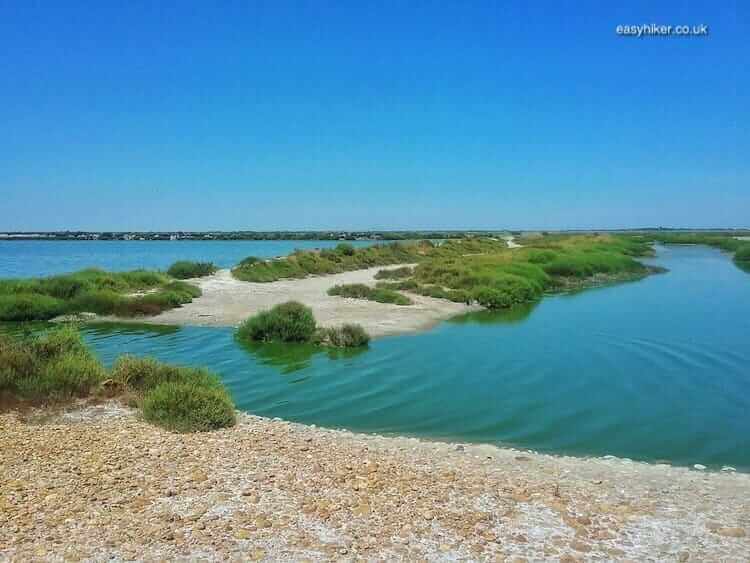
The Camargue certainly gets top marks for its readiness to welcome visitors. For an area whose unique selling point is the charm of the wild, it is surprisingly accessible on different levels.
Firstly and above all, the Camargue is easy-to-reach: several bus lines criss-cross the sometimes dry and agricultural, sometimes marsh-like and wild countryside between and around the two branches of the river Rhone. This provide you with the freedom to explore an area which spreads, after all, over a total of almost 1,000 square kilometres, roughly the size of the five boroughs of New York City.
The hub of this public transport network is the town of Arles, about one hour by train to the west of Marseille. We took line A50 from Arles train station to the coastal village of Saintes-Marie-de-la-Mer, where you are only a short if dusty walk away from the first lakes of the famous wild marshlands of the Camargue

Secondly, and as importantly, the wild marshlands of the Camargue – called the étangs in French – are also freely accessible: the area is designed as a nature reserve but there are no fences to keep you out or away from the lagoons.
Stricter rules may be in force in restricted areas such as the Pont Gau ornithological park (which is also served by the A50 bus), but along the sea dike that separates the marshlands from the Mediterranean coastline, you are free to explore the area on your own and go off-track as long as you behave responsibly.

There is also a lot of wildlife around or what passes as wildlife in a semi-wild, semi-agricultural environment along the marshlands of the Camargue. We spotted some water buffaloes from the bus, but they appeared to be coralled.
Reading a little about the area later on, I found out that these buffaloes are free – for most of the time – to roam the marshes while remaining, essentially, always under human control.
The same is true for the Camarguais, the native horse breed of the region. These partially wild horses are easier to spot than buffaloes, we even saw some from the hiking trail …
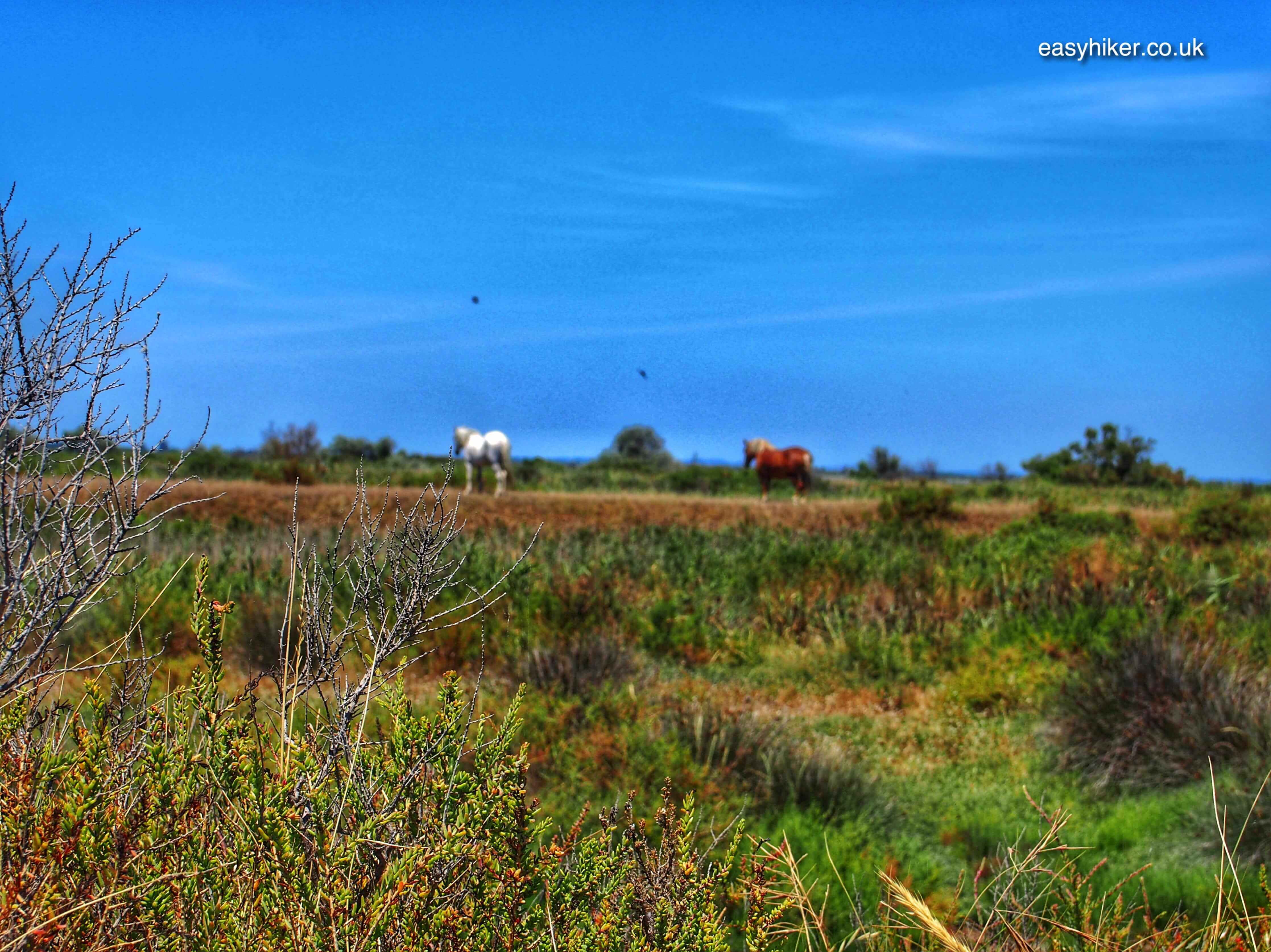
… but most horses that you will meet along the way are of the thoroughly domesticated variety. Horse riding appears to be a big branch of the local tourism industry, but these horses, I am sorry to report, leave no spray in their wake.

Wild birds, conversely, show up in large numbers. There are, apparently, 400 species of birds in the Camargue, most of which look embarrassingly similar to me unless they are flamingos.
You will meet quite a few of those, strutting around either alone, in pairs or in bigger groups. (How do you call a group of flamingos: a school? a fleet? a flock?)

Here are some tips for your own Camargue hike near Saintes-Marie-de-la-Mer: Once you are out of town, having followed the dusty path with the Mediterranean on your right hand side, there is only one route to follow – along the dike – but a range of destinations to shoot for.

Do not forget, however, that once you have reached the signposted destination you have to walk back the same way, doubling the time that is indicated. So do not get carried away.
It is perhaps best to set yourself a specific time target for following the trail – with an eye on the bus schedule – and return when half of this allotted period has elapsed.
Also, be careful when you take one of the side trails towards the lake on your left. The ditch that runs parallel to the trail and that separates it from the lakeside area ….

… can only be crossed in certain spots, so it may be advisable to make a mental map of the area, ensuring that you will find your way back to the trail with ease. (The safest option is to return to the crossing you used for leaving the main trail.)
And wherever you go: be aware that the summer sun can be relentless in a landscape without trees or even larger bushes that can offer a shaded place to rest for a few minutes.
So bring a hat and plenty of sunscreen.

The village of Saintes-Marie-de-la-Mer …
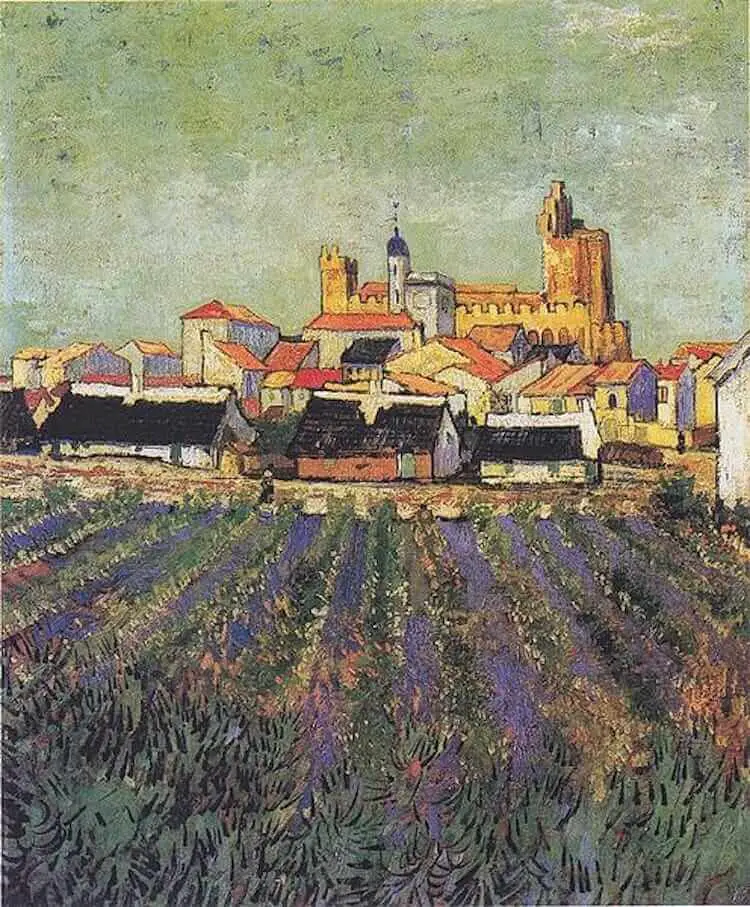
… unfortunately does not look like that anymore. (Van Gogh painted it in 1888 on one of his excursions from Arles.)
Nowadays, it is a fairly business-like tourist town, but still worth a visit if only for the opportunity of finding out more about the legend of the Holy Maries (who gave the town its name) arriving here from the Holy Land after a miraculous Mediterranean journey in a rudderless fishing boat without a sail.

In the “official version”, the Maries of the Sea were Mary of Clopas and Mary Salome, two early followers of Christ, but there are many unofficial versions that provide these two with a number of travel companions.
In ascending order of improbability, these travel companions are: Saint Sarah, a servant girl or – in some versions – one of the wives of Pontius Pilate, an Egyptian by nationality – hence the dark skin colour – who eventually became the patron saint of the Roma people.

Secondly, we have Mary Magdalen and Mary, the mother of Christ. (We seem to have a whole fleet of Holy Maries here. Or is it a flock? A school?)
Thirdly, Joseph of Arimathea with the Holy Grail. And if that is still not wild enough for you, we have the child or the children of Jesus Christ. Whoa! (Somebody should use this as the plot for a movie.)
Speaking about plots: having read a little about the Camargue since our return home, I find it easier now to reconstruct the basic story line of the old TV series.
It seems that the “cool guys” on horseback were cattle handlers, the so-called gardians, which means that the TV show was essentially a French take on Rawhide – or on what Rawhide would look like if the prairies of the wild west stood permanently under five inches of water.
Suffice to say, we did not spot any gardians on our hike. But then again, the Camargue does not really need them: it is fascinating enough as it is.
